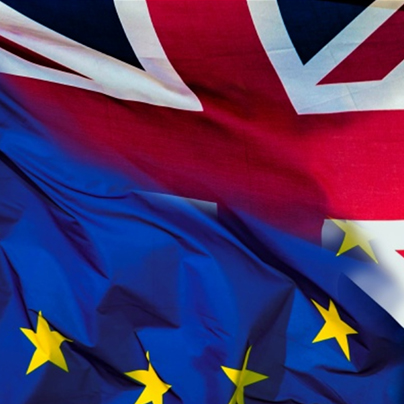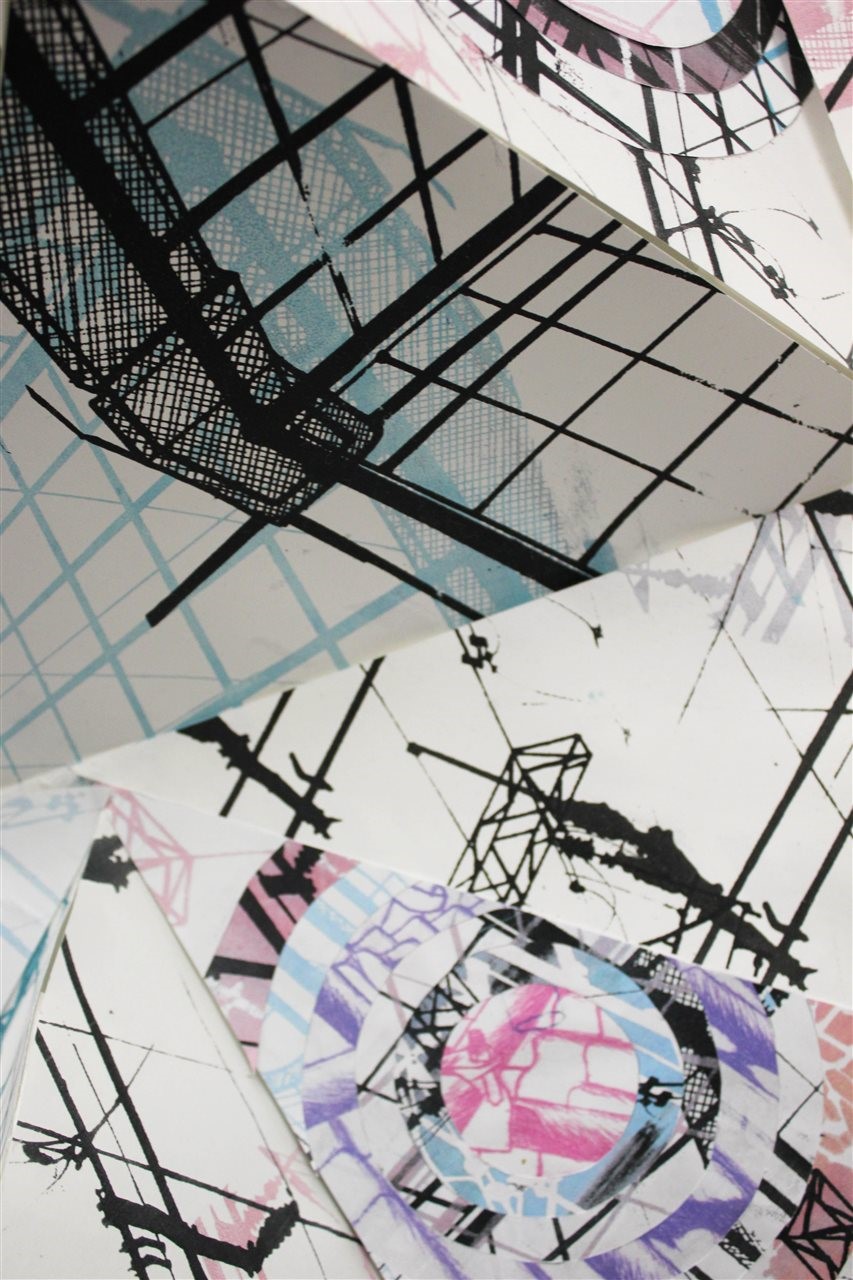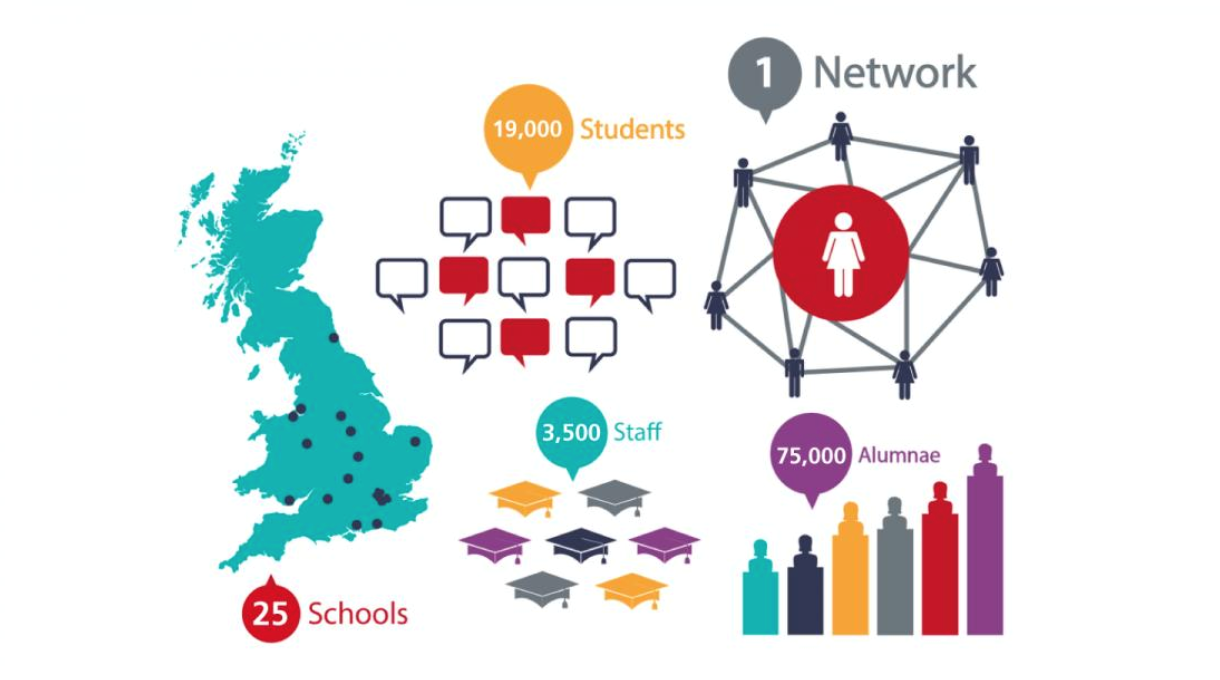Jessica (Year 10) wondered how Swiss German might sit in her mouth and entered this reading for the Oxford German Olympiad. We wish her the best of success!
孔子 Confucius
In this article, Alex (Year 9) explores Confucius and Confucianism as a whole, as well as its influence on world culture, personal ethics, and morality.
中国儒家文化的来源是孔丘,他被尊称为孔夫子,也叫孔子。 他是中国历史上影响最大的思想家和教育家。
孔子不仅是儒家学派创始人,影响了中国两千多年的文化, 也影响了东亚文化圈。东亚文化圈自古以来从汉唐辐射了日本,韩国,越南等国。覆盖的人口超过全人类的四分之一。他的学说成为了东方人品格和心理的理论基础。孔子的德治思想是中国古代思想文化的宝贵遗产。
孔子编订了《五经》,撰写《春秋》,《论语》。他的核心思想为“仁”,主张以礼治国,以德服人。他的学说自西汉起成为封建社会的文化正统,影响极其深远。
孔子的社会哲学主要基于“任”或“爱别人”的原则,同时实行自律。他认为可以使用“黄金法则”将“仁慈”付诸行动,“您不希望自己做的事,不要对别人做。” 比耶稣相似的名言”你们想让别人怎么对待自己,就因该怎么对待别人。“早了五百多年。
在十七世纪,耶稣会神父利玛窦首次将儒家经典作品翻译成拉丁文。孔子的思想传到了西方的各个角落,并且对世界产生了重要的影响。他不仅推动了人类社会的发展,也进一步优化了人类的精神文化,促进世界和平。
Key words:
经典作品 -Classics
儒家学派 – Confucianism
封建社会 -Feudal Society
耶稣会神父 -Jesuit Priest
耶稣 -Jesus
利玛窦 – Matteo Ricci
东亚文化圈 – Sinosphere
社会哲学 – Social Philosophy
论语 – The Analects of Confucius
黄金法则 – The Golden Rule
理论基础 – Theoretical basis
Photo Competition to celebrate the European Day of Languages
Europe is rich in languages – there are over 200 European languages and many more spoken by citizens whose family origin is from other continents. This is an important resource to be recognised, used and cherished. Learning other peoples’ languages is a way of helping us to understand each other better and overcome our cultural differences. So with Brexit fast approaching, what better time to remember that even if we are no longer members of the European Union, the UK is still in Europe.
The Languages Departments celebrated languages through an exciting photo competition in which students were challenged to capture what Europe means to them. Is it a sense of community, a feeling of belonging, diversity, language learning, opportunity, future study or work, family, holidays or something else entirely? Click on the link below to peruse the prize winning entries.
Meister in sozialen Problemen
Our first Linguistica masterclass! Isabelle (Year 10) gives a bit more information about the social problems around the world that were discussed in the fascinating masterclass with Senorita Marchena.
In der Meisterklasse sprachen wir über drei Hauptthemen: Feminismus, Pandemie und Beziehungen. Senorita Marchena zeigte uns einige Cartoons in verschiedenen Sprachen und wir haben sie diskutiert.
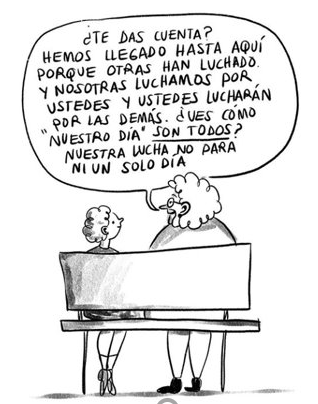
Also zuerst: Feminismus. Das hier war mein Lieblings-Cartoon: Hier ist die Übersetzung: „Wir sind so weit gekommen, weil andere gekämpft haben und wir für dich kämpfen und du für andere kämpfen wirst. Unser Kampf hört nicht für einen einzigen Tag auf.“ Ich denke, dass das hier zeigen will, dass Frauen darum kämpfen müssen, wie sie sich fühlen, weil niemand anderes es für sie tun wird. Es beschreibt, wie alle Frauen, seit vielen Generationen, für das gekämpft haben, woran sie glaubten, und dass wir dasselbe tun sollten. Zweitens könnte es uns auch sagen, dass unser Tag nur aus Kämpfen besteht, aber dass das nicht so sein sollte! Es sagt „Wie ist unser Tag?“ und das zeigt ein Element von Enttäuschung, dass wir so arg dafür kämpfen müssen.

Das nächste Thema war Corona. Ich mochte diesen Cartoon, weil er ein ernstes Thema auf eine farbenfrohere Art zeigt! Es beschreibt zwei Personen, die aneinander vorbeigehen und sich aus Versehen auf den Ellbogen berühren. Dann sehen wir, wie die Person auf der rechten Seite Panik fühlt. Mir geht es genauso! Ich fand es auch gut, dass die Person rechts auch eine Maske trägt – das ist sehr wichtig! Wir haben dann auch besprochen, wie Corona uns beeinflusst hat. Wir haben zum Beispiel darüber gesprochen, ob es uns geholfen hat, neue Fähigkeiten zu lernen oder ob es alles nur negativ war.
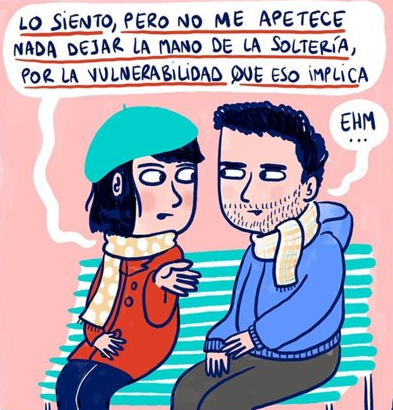
Letztens, Beziehungen. Dies ist der Cartoon, den ich in diesem Gespräch am meisten mochte:
Die Frau sagt, dass sie nicht single sein will, weil das eine Vulnerabilität zeigt. Wenn das der einzige Grund ist, warum sie in der Beziehung bleiben will, ist es nicht nur ein bisschen, aber es kann auch etwas darüber verraten, wie viel Angst Menschen haben können was andere über sie denken. Wir können daraus was lernen: Wir müssen versuchen, mehr selbstbewusst zu sein.
Insgesamt hat mir die Meisterklasse sehr gut gefallen und ich habe es geliebt, die Themen in einer kleinen Gruppe zu diskutieren. Ich würde diese Meisterkurse jedem empfehlen, die daran interessiert sind, etwas zu lernen, was wir im Unterricht normalerweise nicht lernen.
La Francophonie de plus près
Did you know? French is the official language in 29 countries, which puts it in second place behind English. Half of all French native speakers live in Africa. Year 9 have been researching other countries where French is spoken as part of their exploration of the Francophonie. This year also marks the 50 year celebration of the foundation of the international organisation of francophone countries.
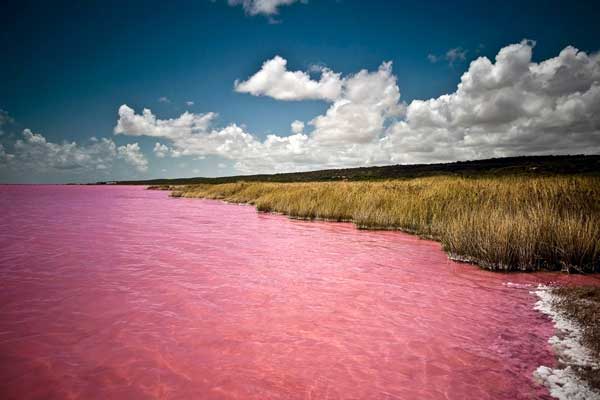
Le Sénégal
Le Sénégal est un pays dans l’ouest de l’Afrique. Il y a des paysages vraiment jolis et magnifiques. La capitale de Sénégal est Dakar et à Dakar il y a beaucoup de personnes. Dakar est sur la côte ouest de Sénégal. L’animal national est un lion mais le lion est presque disparu. Au Sénégal, on peut visiter beaucoup de monuments célèbres et il y a tant d’activités à faire, tel qu’un safari ou visiter un parc national. Il y a un lac rose, qui est une chose incroyable et spéciale. Un monument bien connu est le monument de la renaissance africaine. Aussi, il y a une île faite de coquillages. Aussi, on peut manger dans beaucoup de restaurants et la nourriture est délicieuse. Au Sénégal, il fait très chaud tout au long de l’année. Dans le nord, il pleut en juillet, août et septembre mais dans le sud, il pleut en juin, juillet, août, septembre et octobre.
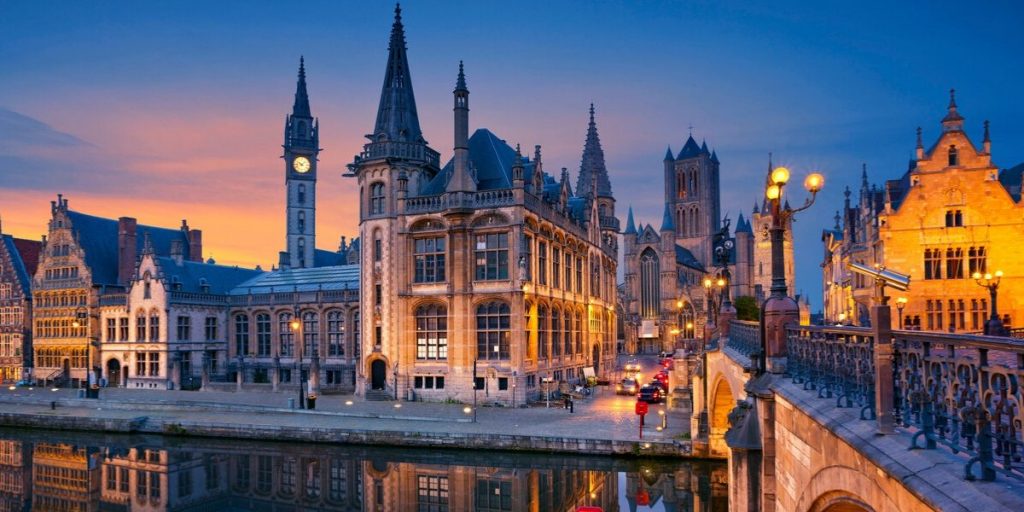
La Belgique
Bonjour, j’habite à Bruxelles qui est la capitale de la Belgique. J’adore Bruxelles parce qu’il y a beaucoup de choses à faire. On peut y visiter la Cathédrale de saint-Michel et Saint-Gudula, manger des gaufres délicieuses et du chocolat et il y a une grande place au centre-ville. Cependant, on ne peut pas faire des activités au bord de la mer parce que Bruxelles est au centre de la Belgique. A Bruxelles, il y a de belle architecture partout par exemple, Manneken Pis et la gare Centrale de Bruxelles. Il y a aussi beaucoup de musées dans la ville où on peut voir des objets historiques.
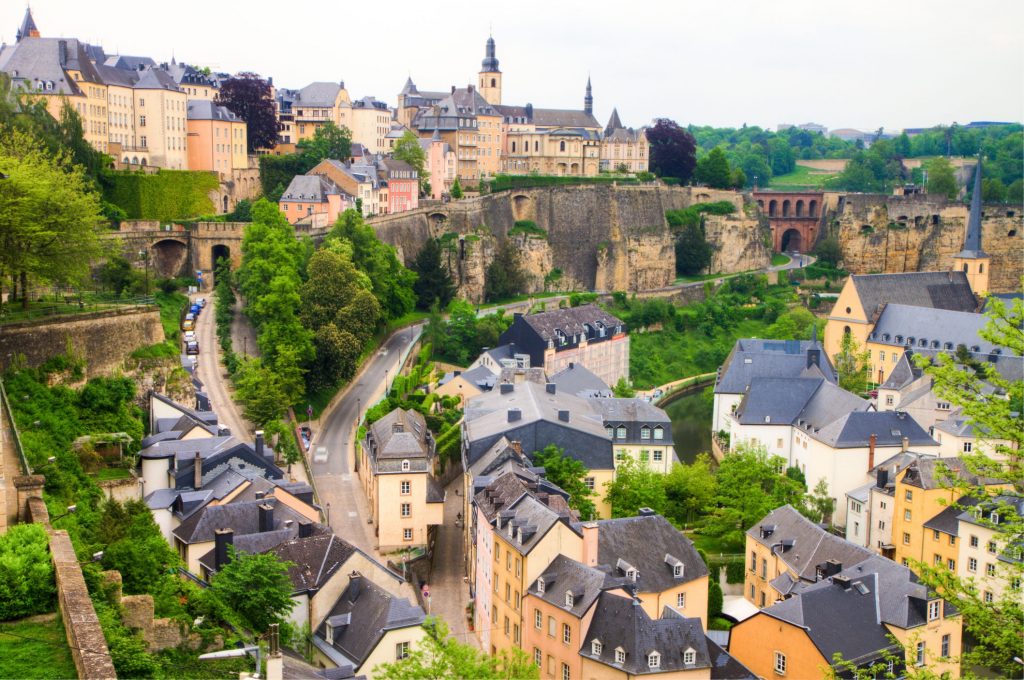
Le Luxembourg
La capitale de Luxembourg s’appelle Luxembourg-Ville aussi. Elle est située dans le centre du pays. Il y a beaucoup de collines est la ville est assez historique. J’habite au centre-ville, dans une petite maison. Je n’habite pas près de la mer parce que le Luxembourg est un pays enclavé. La météo au Luxembourg est affreuse, il n’y a pas beaucoup de soleil, comme en Espagne. Normalement, il fait un peu froid et il pleut. Il fait le plus chaud en juin, il fait 23 degrés. Mais en janvier il peut faire -2 degrés. La majorité de la pluie est en décembre, normalement il y a 83,3mm. Parfois, il y a aussi de la neige en décembre, mais, ce n’est pas normal. Mais, il y a plein de choses à faire, on peut visiter des attractions touristiques, comme le pont du Grand Duchesse Charlotte, qui est un grand pont rose. Aussi on peut visiter le Plateau Bourbon qui est magnifique. Pour les sports il y a tellement de choses à faire comme le cyclisme, le golf, le tennis, le criquet et la patinoire. Aussi il y a le Tour de Luxembourg qui a lieu après le Tour de France, le cycliste célèbre Andy Schleck participe au tour.
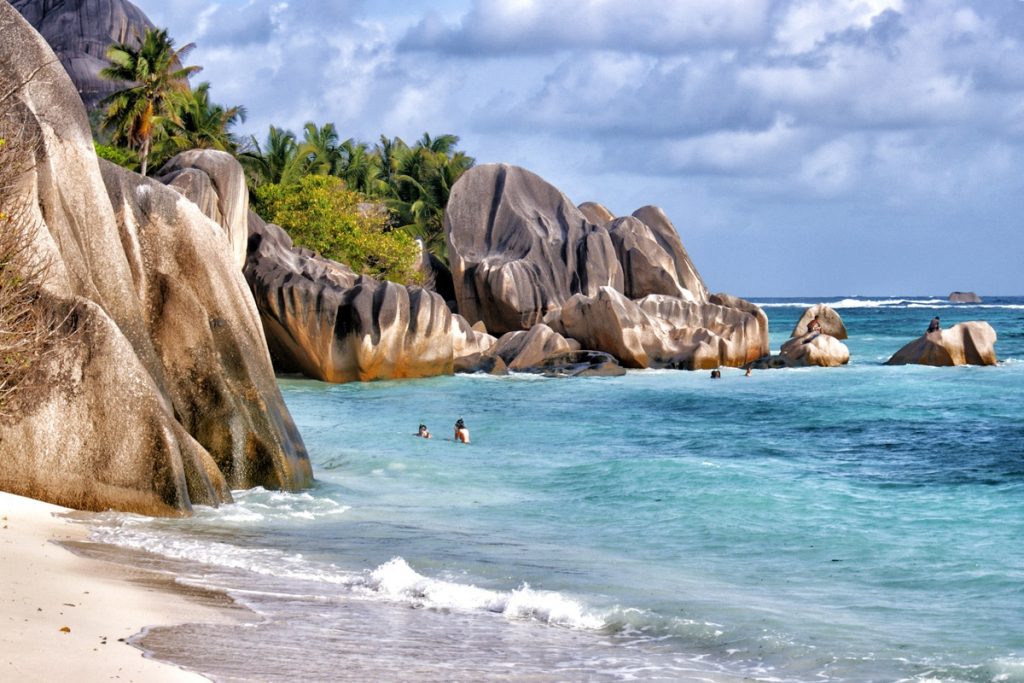
Les Seychelles
Les Seychelles sont situées dans l’hémisphère sud et au nord-est du Madagascar. Aux Seychelles il y a cent quinze îles. Victoria est la capitale des Seychelles. C’est dans le nord-est de l’île de Mahé. Dans la République des Seychelles, normalement, il fait beau. Il y a un climat tropical. Les mois chauds sont de juin à mars, et, la saison des pluies est de novembre à mars. En hiver, il ne neige pas et il ne fait pas très froid. Si on va aux Seychelles, on peut aller nager ou on peut se détendre sur la plage. Si on est fatigué, on peut aller à la pêche ou on peut louer un bateau ! C’est célèbre pour tant de plages magnifiques, et j’adore aller nager avec les tortues et faire des promenades et des guides touristiques ou faire du cheval. J’adore les Seychelles parce que c’est un beau pays. J’aime y faire de la natation car normalement, il fait chaud. La chaleur est insupportable ! Une personne célèbre qui est née aux Seychelles, c’est Diana. C. Zollicofer. Elle est actrice.
Dreißig Jahre Deutsche Einheit
9 November 2020 marks 30 years since the reunification of Germany. For many Germans after years as a divided nation, the fall of the Berlin Wall and the subsequent reunification was a great celebration. Isabelle (Year 10) explored this fascinating history.
Erstens, warum wurde die Berliner Mauer gebaut? Insgesamt schien die Westseite Deutschlands viel erfolgreicher zu sein, was die Ostseite nicht mochte. Zum Beispiel waren in den 1950er Jahren tausende Ostdeutsche durch Berlin in den Westen gegangen, um das harte kommunistische Leben zu verlassen. Viele von ihnen waren gut ausgebildete Arbeiter. Ostdeutschland hat wertvolle Leute verloren – das hat ihnen natürlich nicht gefallen! Ein weiterer Grund für den Mauerbau ist, dass in den 1950er Jahren das Reisen zwischen den beiden Sektoren Berlins relativ einfach war. Das bedeutete, dass die Menschen im östlichen Teil leicht den Westen besuchen und sehen konnten wie das Leben dort war. Im Westen war das Leben komfortabler und freier. Das wäre für die Menschen aus dem Osten attraktiv gewesen. Insgesamt flohen fast 2000 Flüchtlinge pro Tag in den Westen. Die Mauer wurde von der ostdeutschen Regierung gebaut um die Menschen davon abzuhalten, die Ostseite zu verlassen. Niemand würde ein Gebiet regieren wollen, in dem sich keine Menschen befinden! Deshalb haben sie die Mauer gebaut.
Zweitens – wie haben andere Länder reagiert? In einfachen Worten: Die USA mochten die Berliner Mauer nicht! Das hier ist der Checkpoint Charlie. Es ist der Hauptübergangspunkt an der Berliner Mauer und die USA haben ihre amerikanische Armee regelmäßig auf die Ostseite geschickt. Offiziell durften sie das tun, weil die Mauer nur für Deutsche war, nicht für Ausländer. Es gab aber immer noch viele Probleme, ob die Amerikaner untersucht werden sollten oder nicht, wenn sie nach Ostdeutschland gingen. Deswegen stellten die USA Panzer auf die Westseite der Mauer. Das erschreckte die Ostseite (weil sie wussten, dass die Panzer die Mauer brechen könnten), also stellten sie auch Panzer auf ihrer Seite der Mauer. Etwa einen Tag lang war hier zwischen Ost und West große Spannung. Dann einigten sie sich darauf, dass sich beide Seiten langsam zurückziehen würden. Die US Armee betrat fortan nicht mehr den Ostteil Berlins.
Am 26. Juni 1963 hielt Präsident John F. Kennedy seine berühmte Berliner Rede. Er sagte den Berliner Leuten, dass er auch ein „Berliner“ ist. Nur dass er einen kleinen Fehler gemacht hat! Er sagte “Ich bin ein Berliner”, nicht “Ich bin Berliner”. Auf Englisch bedeutet das “I am a donut”! Hier bot er auch ein bisschen Frieden an, weil er sagte, die Mauer sei besser als ein Krieg – ich finde das vernünftig!
1989 – also nach fast 30 Jahren – waren mehrere Revolutionen in Polen und Ungarn da das kommunistische Wirtschaftssystem es nicht schaffte den Menschen Wohlstand zu bescheren. In Deutschland gab es wochenlang Demonstrationen in denen die Menschen politische und wirtschaftliche Reformen forderten. Das besondere ist: Dies war eine friedliche Revolution! Die Demonstranten waren friedlich. Und: Der Führer der Sowjetunion, Mikhail Gorbachev, entschied die Demonstration nicht gewaltsam niederzuschlagen! Er erkannte dass das Sowjetsystem am Ende war und er war ein guter Mensch, der Menschenleben wertschätzte. Deswegen öffnete dann die Regierung Ost-Deutschlands die Mauer. Die USSR wurde schwächer und am 3. Oktober 1990 wurde Deutschland wiedervereinigt. Die Siegermächte ließen dies zu da die USSR erhebliche finanzielle Unterstützung von Deutschland bekam und da die USA die Chance sahen ihr demokratisches und kapitalistisches System weit nach Osten auszuweiten. Deutschland versprach sich weiter in der Europäischen Union zu integrieren.
Zu guter Letzt, was sind die Konsequenzen des Mauerfalls? Die Erste ist, dass Familien und Verwandte, die seit fast 30 Jahren getrennt waren, sich wieder treffen konnten! Zuvor konnten sie sich wegen der Mauer nicht sehen (und es war gefährlich, sie illegal zu überqueren), aber jetzt konnten sie frei überall hinreisen wo sie wollten. Die andere ist, dass der Fall der Berliner Mauer den Zusammenbruch des Kommunismus beschleunigte und viele weitere Länder seitdem freier und demokratischer wurden und es den Leuten in Osteuropa viel besser geht als vor 30 Jahren. Viele dieser Länder gehören heute zur Europäischen Union und zum Beispiel Polen und Ungarn erhalten erhebliche wirtschaftliche Hilfe von der Europäischen Union und haben heute einen viel höheren Lebensstandard als vor 30 Jahren..
Da haben wir es also! Ein kurzer Überblick über die Gründe und Konsequenzen der Berliner Mauer und dann auch über den Fall der Berliner Mauer. Das geschah erst vor 30 Jahren und war für Deutschland sehr wichtig.
Italiano – una lingua delle mani
Bianca’s ultimate guide to understanding and using hand gestures when speaking Italian will set you up forever. Watch and learn!
By Bianca (Year 9)
My pad met my moedertaal Afrikaans
My journey with my mother tongue Afrikaans – Samantha in Year 8 writes about why Afrikaans is important to her and how learning the language expands her horizons. For the benefit of Linguistica readers, she has also translated her article – see underneath.
Afrikaans is ‘n Germaanse taal, dit kom van Nederlands af en word gepraat in Suid-Afrika en ander lande daar naby, byvoorbeeld Namibia en Botswana. Dit word ook gepraat in lande soos Australië, Zimbabwe en Nieu-Seeland en ook oral oor die wêreld. In totaal praat amper drie en twintig miljoen mense Afrikaans wêreldwyd. Daar is elf amptelike tale in Suid-Afrika, maar baie dialekte word ook gebruik. Zulu is die mees gesproke, met elf miljoen [11.58 miljoen]. Volgende is Xhosa, met agt miljoen [8.15 miljoen] mense wat dit praat. Afrikaans word gepraat deur ses miljoen mense [6.85 miljoen] – die derde mees gesproke van die elf tale. 13.5% van die populasie praat Afrikaans, baie mense gebruik dit as ‘n tweede taal ook, in plaas van hulle eerste taal.
Die meeste mense in Suid-Afrika praat verskeie tale, party mense praat selfs al elf amptelike tale! Dit is baie belangrik om te probeer om meer as een taal praat; tale is opbouend en inspirerend. Dit bevorder samesyn en verhoudings. Omdat ek Afrikaans is kan ek baie meer van die kulture geniet; ek kan met ander Afrikaanse mense praat, na liedjies luister en ek kan leer in en van Afrikaans. Ek is so bly om ook baie Suid-Afrikaanse rol modele te hê soos Nelson Mandela en Desmond Tutu. Dit is dieselfde met ander tale en is hoekom ons almal moet aan hou om ons tale te deel.
Om ‘n tweede taal te kan praat is wonderlik. Dit beteken baie vir mense wanneer jy met hulle in hulle eie taal kan praat. As jy die moeite doen om met iemand te kommunikeer in die taal waarmee hy gemaklik is, wys dit vir die ander mens hoe baie jy vir hulle omgee. Jy kan meer leer van die persoon want hulle sal beter kan kommunikeer en emosies wys. Dit is nie net die skoonheid van so omgee nie, maar om die moeite te doen om met iemand anders te praat in hulle gekose taal, wys dat jy omgee en met hulle wil praat. Selfs as jy net ‘n paar woorde leer is dit baie mooi, maar om ‘n taal ten volle te kan gebruik is net ongelooflik! Daar is so baie van ‘n taal wat jou kan help, dit maak jou nie net meer intellektueel nie maar dit het ook ‘n paar fisiologiese voordele. Wanneer jy ‘n tweede taal leer, groei die dele van jou brein wat met taal te doen het, dit beteken jou eerste of selfs tweede taal sal ook verbeter. Narvorsing toon dat mense wat tweetalig is vinniger van een taak na ‘n ander taak kan oorskakel. Hulle kan ook by nuwe omstandighede aanpas.
Afrikaans is ‘n baie beskrywende taal, daar is so baie voordele daaraan om dit te kan praat. Suid-Afrika is een van die mooiste plekke op die aarde. Die mense is almal so wonderlik en vriendelik met almal en die land is ongelooflik. Suid-Afrika word die Reënboognasie genoem, so genoem deur Desmond Tutu. Dit is ‘n metafoor vir die samehorigheid en diversiteit van al die mense van Suid-Afrika.
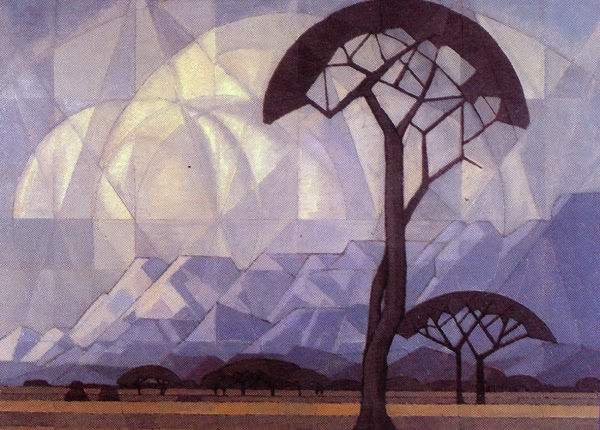
Translation:
Afrikaans is a Germanic language, which developed from Dutch and is spoken in South Africa and other places nearby, for example Namibia or Botswana. It is also spoken by expat communities in places such as Australia, Zimbabwe and New Zealand as well as all over the world. In total, almost twenty three million people speak Afrikaans worldwide. There are eleven official languages in South Africa, but there are many dialects also used. Zulu is the most spoken, with eleven million [11.58 million]. Next is Xhosa, with eight million [8.15 million] people who speak it. Afrikaans is spoken by six million people [6.85] – the third most widely spoken of the eleven languages. 13.5% of the population speak Afrikaans, many people using it as a second language, instead of their first one.
Most people in South Africa speak many languages, some people even speak all eleven of the official languages! It is very important to try and speak more than one language. Languages are uplifting and inspiring. It promotes togetherness and relationships. Because I am Afrikaans, I can enjoy a lot of the culture along with it; I can speak to other Afrikaans people, I can listen to songs and I can learn about Afrikaans in the language. I am also so happy to have many South African role models such as Nelson Mandel and Desmond Tutu. It is the same with other languages and is a reason why we should all continue to learn and speak different languages.
To be able to speak a second language is wonderful. It means a lot to people when you can speak to them in their own language. If you put in the effort to communicate in the language with which a person is comfortable, you show the other person how much you care for them. You can learn more about a person because they will be able to communicate better and they will be able to show emotion. To put in the effort to speak to someone else in their chosen language shows you care and want to speak to them. Even if you only know a few words, it is very good to know a whole language and to be able to use it is just incredible! There is so much of a language that can help you. Not only does it make you more intelligent, it also has physiological advantages. Research shows that people who are bilingual can switch more quickly from one task to another, they can also adapt more easily to new circumstances.
Afrikaans is a very descriptive language. There are so many advantages in being able to speak it. South Africa is one of the most beautiful places on Earth. The people are all so wonderful and friendly to everyone and the country is unbelievable. Desmond Tutu called South Africa the Rainbow Nation. It is a metaphor for the togetherness and diversity of all the people in South Africa.
The history and culture of Qatar
By Lucy (Year 9)
I’ve chosen to write my article about Qatar. I used to live in Qatar when I was younger, and the culture I experienced while I was there fascinated me. Recently, I returned to Qatar and visited a new museum, entirely dedicated to the history of Qatar. I found this an enlightening experience, and I wanted to share the culture with others. Qatar has a rich history and culture, dating back to the forming of the Arabian Peninsula 700 million years ago. The Qatari peninsula comprises a wide variety of ecosystems; from arid deserts to stunning rock formations and lush underwater worlds.
The people who inhabited Qatar moved between the land and the sea: herding, trading, hunting and pearling. Half of the year would be spent in the desert, while the other, the pearling season, would be spent by the coastline. Pearls were Qatar’s main trade for millennia, and supported the Qatari livelihood. Families would pass on expertise surrounding pearls, and in the summer fleets of boats and divers would leave for the reef to dive for pearls. The wealth of this nation was built on the pearl-rich sea surrounding the peninsula. In fact, until the early 1900s, pearls were Qatar’s most valuable export. Successful pearl merchants were very famous and wealthy, and respected amongst the community. Qatar’s entire cycle of movement was based upon the pearl seasons.
In the autumn and winter, the people of Qatar would journey into Al Barr; the desert, to herd and to hunt. In the desert, large communities would be formed, with families depending on each other and showing shared values of hospitality and respect. Communal values of valour, courage, honour, integrity and respect gave people a strong sense of family loyalty which influenced behaviour amongst the community.
In 628 AD, Islam came to Qatar, and quickly became the country’s main religion. Islam was important in all areas of daily life, and this is shown not only in the construction of elaborate mosques; (such as those in the archaeological site of Murwab) but in the expressions of modesty in the clothes of both men and women, and the development of a majilis (now incorporated into the hallway) in every home. The role of a majilis was as the social heart of a Qatari home, and it was the space for welcoming guests and having discussions. Even today the majilis is an important part of Qatari society, with one being present in almost every home. As the Hadith (an important script in Islam) states, “Part of man’s happiness is a spacious dwelling, a good neighbour, and a good camel.”
The modern history of Qatar has been defined by the discovery of oil in the 1940s. The demand for pearls plummeted in the early 1900s, taking Qatar’s economy with it; due to the creation of “fake pearls”- pearls that were grown in freshwater and not seawater. These new pearls were more affordable and therefore more popular, although of a much worse quality than seawater pearls. Qatar was struggling until 1940, when the onshore oil field of Dhukan was found, followed 10 years later by Qatar’s first offshore field. These oil discoveries meant Qatar’s economy boomed, and it has now regained its wealth of centuries ago. Qatar has also become more involved on a recreational level, with the country hosting the recent world Athletics Championships and due to host the Football World Cup in 3 years’ time.
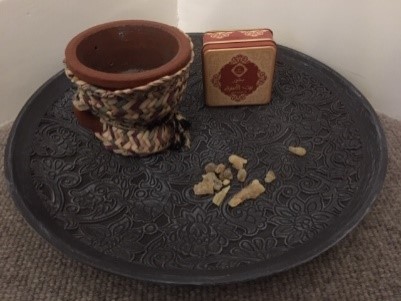
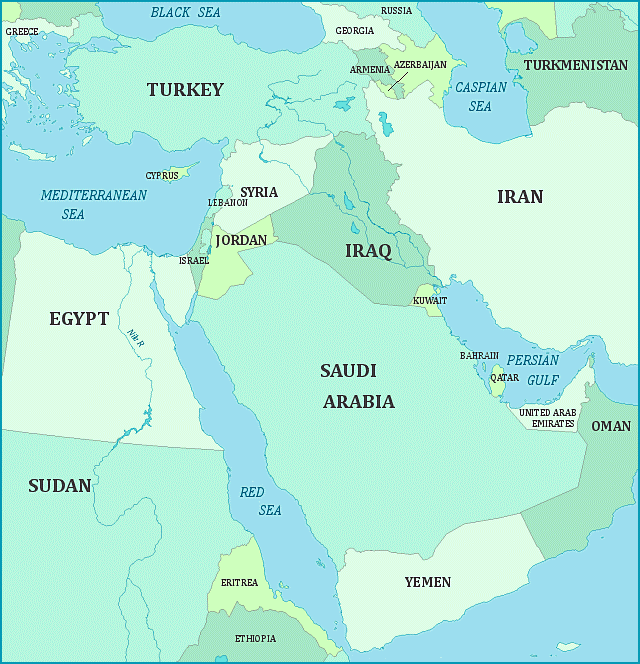
I hope you enjoyed this brief summary about Qatar!
Here’s a little test- Can you translate any of these Arabic words?
- Shukran
- Nem
Bonus Challenge- Can you do these in their original form?
لا عفوًا، على الرحب والسعة

